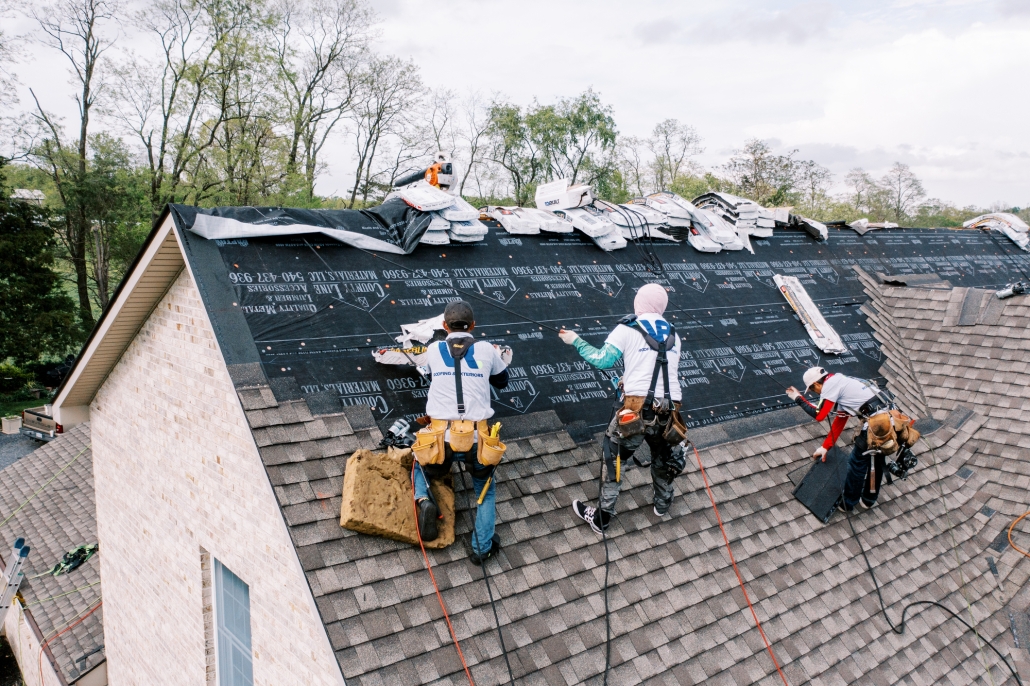Step-by-Step Overview to Discovering the Right Roofing Companies in Gainesville
Step-by-Step Overview to Discovering the Right Roofing Companies in Gainesville
Blog Article
Finest Practices for Ensuring Appropriate Roofing Air Flow
A well balanced consumption and exhaust air vent proportion, commonly 1:300, plays a critical role, with intake vents preferably positioned at the reduced side of the roofing for cool air entry and exhaust vents at the top for cozy air leave. Maintaining insulation away from vents is crucial to prevent airflow constraint.
Understand Air Flow Fundamentals
Correctly recognizing air flow essentials is crucial for ensuring the long life and performance of roof. Efficient air flow minimizes wetness build-up and temperature extremes in the attic, both of which can lead to considerable architectural damages over time. A well-ventilated roof aids in protecting against typical concerns such as mold and mildew development, wood rot, and ice dams, which can jeopardize the stability of the roof materials and the underlying frameworks.
The key goal of air flow is to assist in the activity of air, permitting a consistent exchange in between the outdoor and indoor atmospheres. This equilibrium is accomplished through a mix of consumption and exhaust vents that interact to maintain ideal air flow. Consumption vents, commonly situated along the eaves or soffits, allow fresh air to get in the attic room room, while exhaust vents, commonly positioned at or near the roofing system ridge, allow warm, moist air to run away.
Trick aspects affecting the effectiveness of roof covering ventilation include correct placement, ample sizing, and guaranteeing that both intake and exhaust vents are unhampered. Routine assessment and upkeep are vital to determine potential obstructions, damages, or inadequacies in the ventilation system, thus protecting the roof covering's efficiency and sturdiness.
Types of Roof Vents
Roof vents play a critical duty in preserving effective attic room air flow and, by extension, the general wellness of the roofing system. Different kinds of roofing vents are readily available, each with one-of-a-kind benefits customized to particular roof covering demands.

Soffit vents are set up under the eaves and operate in tandem with roof vents to make sure a balanced consumption and exhaust system. By allowing cooler air to go into from below, soffit vents facilitate the expulsion of hot air via upper vents. Gable vents, located on the exterior wall surfaces of the attic, deal an additional effective option, specifically in homes with gable roof coverings.
Evaluate Your Existing Air Flow

Next, think about the age and problem of your roof covering materials and ventilation elements. Older systems may not adhere to existing building regulations or might have degraded in time, lowering their effectiveness. Conduct a complete examination to determine any type of indicators of deterioration, such as rust, damage, or gaps that could endanger the system's performance.
Additionally, determine the attic temperature level and moisture degrees. High temperatures and humidity can indicate inadequate ventilation.
Installment Best Practices
Reliable setup of roof covering air flow systems is critical for ensuring optimum efficiency and longevity. Correct installation starts with comprehending the specific air flow demands of the structure and the roof it covers. This includes computing the right proportion of consumption to tire vents, normally sticking to the 1:300 regulation, which stipulates one square foot of air flow for each 300 square feet of attic room floor area.

Consumption vents ought to be set up at the roofing's lower edge, frequently in the soffits, to allow trendy air to enter. Exhaust vents, on the other hand, should be mounted near or at the roofing system's height to facilitate the leave of cozy, moist air.
Seal all vent links carefully to avoid air leaks and potential water infiltration. Usage top quality materials and adhere to maker standards to make certain resilience and performance. Additionally, integrating ridge vents with baffles can dramatically boost airflow performance by stopping wind-driven rainfall and snow from getting in the attic.
Eventually, specific installment of roof covering ventilation systems mitigates potential issues such as mold and mildew development, ice dams, and architectural damages, ensuring the roof's integrity and the building's overall wellness.
Normal Maintenance Tips
Uniformity in maintenance techniques is basic to ensuring the lasting efficiency of roofing air flow systems. Regular assessments are critical, ideally done biannually-- in the springtime and autumn. During these assessments, ensure that vents are without particles, nests, and various other obstructions that could hinder air flow. Look for any type of indications of moisture build-up or mold, as these can indicate incorrect ventilation or leakages (gainesville roofing companies).
Cleansing the vents is one more important job. Make use of a soft brush or a vacuum to remove dirt and debris from intake and exhaust vents. Beware not to damage the air vent screens or louvers during the procedure. Additionally, evaluate the attic space for any signs of water damage, which might endanger the honesty of the roof covering system.
Proper insulation is similarly crucial. Ensure that attic insulation does not block the vents, as this can badly restrict air movement. Rearrange or replace it to keep a reliable barrier. if any type of insulation has shifted or cleared up.
Last but not least, change any type of harmed or missing out on elements immediately. Damaged vents, broken shingles, or explanation scrubby flashing can all add to inadequate air flow and must be addressed immediately. Regular maintenance guarantees that the roofing ventilation system works efficiently, consequently extending the life-span of the roof covering itself.
Verdict
Ensuring appropriate roof covering air visite site flow is extremely important for maintaining the performance and sturdiness of a roof system. Adherence to the 1:300 intake and exhaust vent proportion, paired with the critical placement of vents, is necessary.
A balanced consumption and exhaust vent proportion, commonly 1:300, plays an essential role, with consumption vents ideally put at the lower edge of the roofing system for trendy air entry and exhaust vents at the height for cozy air leave. Consumption vents, generally situated along the eaves or soffits, allow fresh air to go into the attic room room, while exhaust vents, often positioned at or near the roofing system ridge, allow warm, humid air to escape.
Soffit vents are installed under the eaves and work in tandem with roofing vents to make sure a balanced intake and exhaust system. By allowing cooler air to get in from below, soffit vents promote the expulsion of hot air with top have a peek here vents. Adherence to the 1:300 consumption and exhaust air vent ratio, coupled with the tactical placement of vents, is necessary.
Report this page